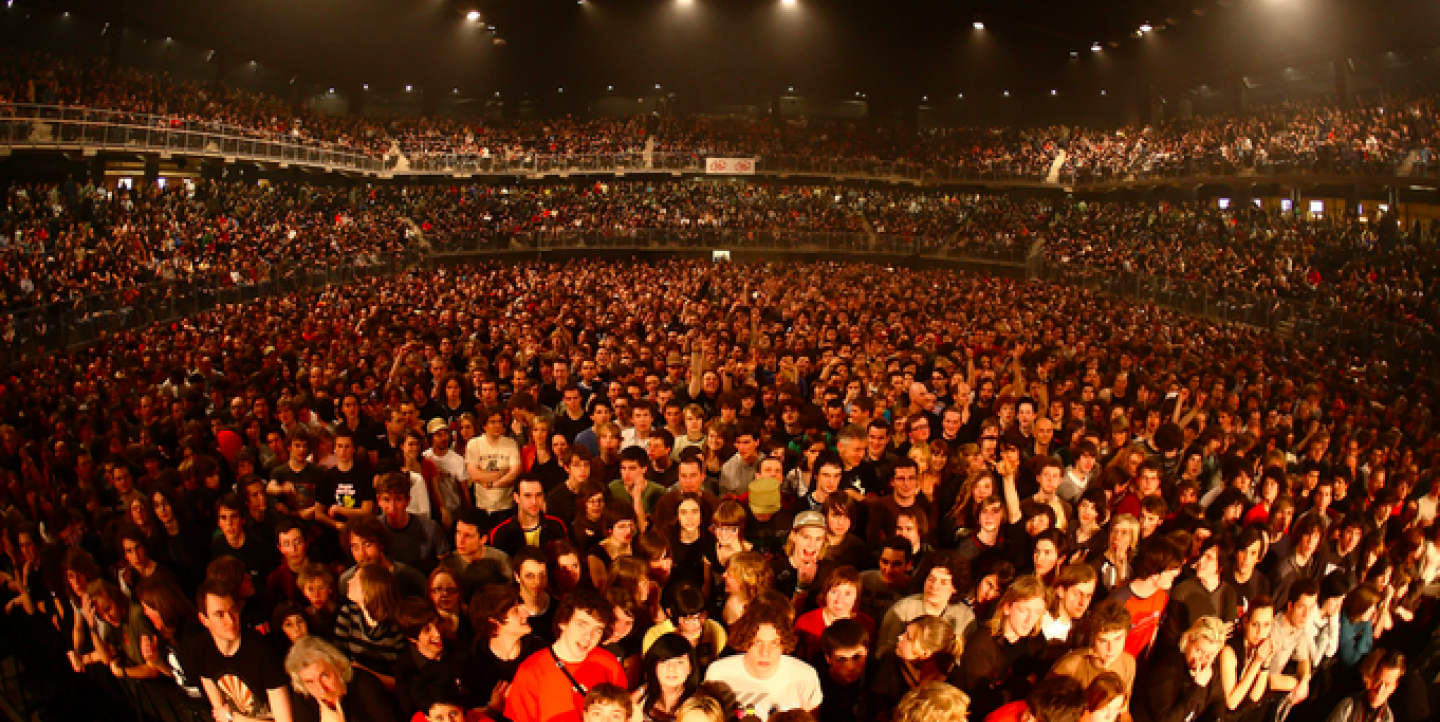When Egyptians took to the Cairo streets to protest the government of Mohammed Morsi this summer, some news outlets called it the biggest uprising in history. They estimated there were 30 million protestors. Other news organizations put the number at 14 million. There’s no doubt the protests were large. But just how large?
Reporting on crowd size is a challenge that journalists across the world face when reporting on events from protests to concerts. The count gets even trickier for political events, since opposing sides may turn crowd estimates into public relations tools.
"It's very rare that you have the report of a crowd size where there isn't some incentive to exaggerate one way or the other," mathematician Hannah Fry told the BBC.
Counting "all the heads directly at a demonstration or rally is usually impossible,” write Ray Watson and Paul Yip, in their widely cited paper on counting crowds.
Although there may not be a perfect formula, there are several ways to estimate and count a crowd. Here's what the experts suggest:
Start by answering some basic questions
Depending on the event, you may already have a lot of information available to you. Crowds at events like a sporting match or a concert are simple to count because entry to the event is controlled. People are counted as they pass through the gates or turnstiles.
Find out “the carrying capacity of the space and what the square footage is,” sociology professor Clark McPhail told NPR. Then, ask yourself: What proportion of the space is occupied? Is it 100 percent, 75 percent, 50 percent?
Use the Jacobs Crowd Formula
Herbert Jacobs, a University of California, Berkeley, journalism professor in the 1960s, is credited with modernizing crowd-counting. From his office window, Jacobs could see students gathered on a plaza protesting the Vietnam War. The plaza was arranged in a grid, so Jacobs counted students in a few squares to get an average of students per square, then multiplied that by the total squares. He also came up with a basic density rule that says a “light crowd” has one person per 10 square feet and a “dense crowd” has one person per 4.5 square feet. A heavily crowded, “mosh-pit” density, as Watson and Yip call it, would have one person per 2.5 square feet.
Use photography
Refer to aerial or satellite imagery, if available, of the crowd. Then draw a grid and employ the Jacobs method, as described above. High-resolution photos may even allow you to count heads. And depending on the photo software you use, you may be able to orient photos the match up with a grid for easier counting and estimation.
The problem with using photography is that the area occupied by a crowd is often irregular, and parts of it will remain invisible to the camera, hidden behind trees, buildings or darkness.
Compare and analyze estimates from multiple sources
You may get different numbers from police, private security and the organizers. A little math can help you decide which estimate is closer to correct. For instance, after a June 4 candlelight vigil in Victoria Park in Hong Kong to mark the 22nd anniversary of a crackdown on the pro-democracy movement in Beijing, Reuters, BBC and other major news agencies used the organizer’s estimate of 150,000. The police estimate was 77,000. Watson and Yip estimated the average density to be slightly less than 2 people per square meter, corresponding to a solid crowd. They knew the area of the space was around 42,000 square meters. An estimate of 150,000 would have required that the entire area was covered with people at mosh pit density, which they knew it was not. Based on these facts, they estimated the crowd to be closer to the police estimate.
When counting a moving crowd, use the one- or two-point method
In the one-point method, counters positioned near the focal point of a march or parade tally the number of people who pass their station in a given time interval.
Another method, which Popular Mechanics calls “faster and more accurate,” is outlined by Watson and Yip: set up two counting stations, suitably spread out. The counters tally people passing and also randomly survey them to ask if they also passed the other station (or planned to) to estimate how many people are counted twice.
Turn to technology
Image analysis technology is continually improving, and will provide increasingly more accurate answers. A number of methods do currently exist, including mathematical, computer-assisted and web-based tools. Curt Westergard, president of Washington-based Digital Design & Image Service, told Popular Mechanics that he plans to crowd-source head-counting on the web, by sending aerial photos to Amazon's Mechanical Turk, a network of people around the world who do tasks online for a fee. Westergard says he will send a photo to 20 people, receive 20 different head counts and come up with an average.
Do you depend on other crowd-counting techniques? Please share them in the comments below.
Jessica Weiss, a former IJNet managing editor, is a freelance writer based in Buenos Aires.
Image courtesy of Matthew Fields with a Creative Commons license.

